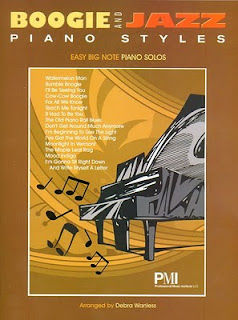 photograph by Peter Breinig, from Peter Stack, "The First Lady of Sheet Music," San Francisco Chronicle (May 18, 1982), p. 40.
photograph by Peter Breinig, from Peter Stack, "The First Lady of Sheet Music," San Francisco Chronicle (May 18, 1982), p. 40.Ms. Starr was a charismatic figure owing to her passion about music and the musical repertoire and her in-depth knowledge of the sheet music world. The sheet music trade has changed dramatically in the 20 years since her death. During her life, few people used the internet at all, and the resources available on the internet were very limited. The online databases that existed then were not widely available and were not easy to use. There were also many more "bricks and mortar" sheet music stores than we have today. Sheet music had not yet been digitized. Additionally many library collections were largely uninventoried.
Dorothy Starr's encyclopedic knowledge of printed music and her ability to find just the right piece of music from a stack of music tucked away in some corner always impressed and charmed her loyal customers. Print reference sources and publishers catalogs were essential tools. Finding unusual sheet music during Dorothy Starr's life also required the use of experts (music dealers like herself, librarians, collectors, performers and publishers). This meant knowing who the experts were and how to find them.
 Here is an example of sheet music sleuthing in the pre-digital age -- correspondence between Dorothy Starr and the M. Baron Company, March 4, 1969. Note that in addition to requesting a particular score she requests a catalog from the publisher for her future reference. The publisher replied to her query in red handwriting.
Here is an example of sheet music sleuthing in the pre-digital age -- correspondence between Dorothy Starr and the M. Baron Company, March 4, 1969. Note that in addition to requesting a particular score she requests a catalog from the publisher for her future reference. The publisher replied to her query in red handwriting.Since taking possession of Dorothy Starr's collection the Library has been continuously working to make its contents accessible to the public. We entered the first song, "'A' You're Adorable," into the Dorothy Starr Starr Collection database on July 14, 1993. In the intervening sixteen and a half years library staff and volunteers have entered an additional 33,000 records into the database.
The technological innovations of the last 20 years have made it far easier to know what music is in print, and which library collections own what music. Nevertheless, it can sometimes still be difficult to locate sheet music. The librarians of the Art, Music and Recreation Center want to be your experts for locating rare and obscure sheet music and scores. Visit us or call us at (415-557-4525) if you need any assistance.
Here is a History of the Dorothy Starr Collection which includes a biography of Dorothy Starr and the story of how the Library came to own her collection.
Here is an additional link to a Guide to Searching for Songs at the San Francisco Public Library.








